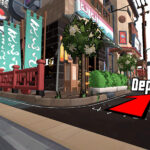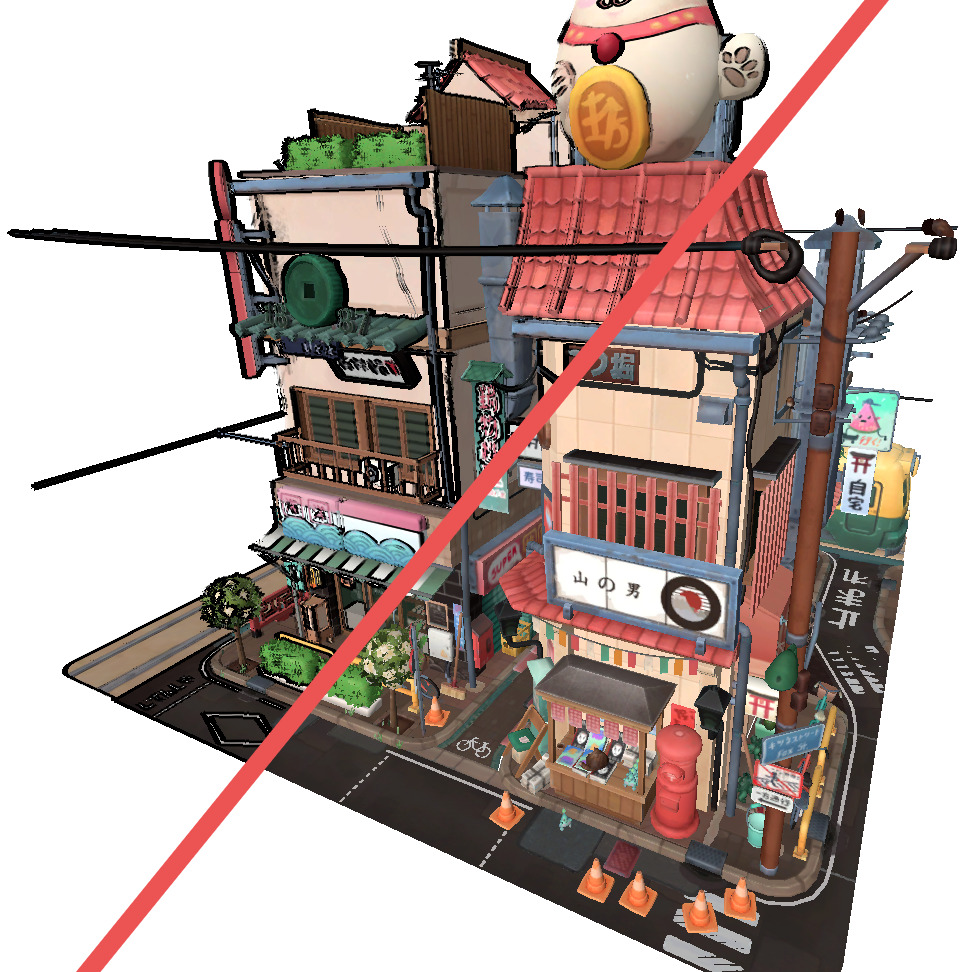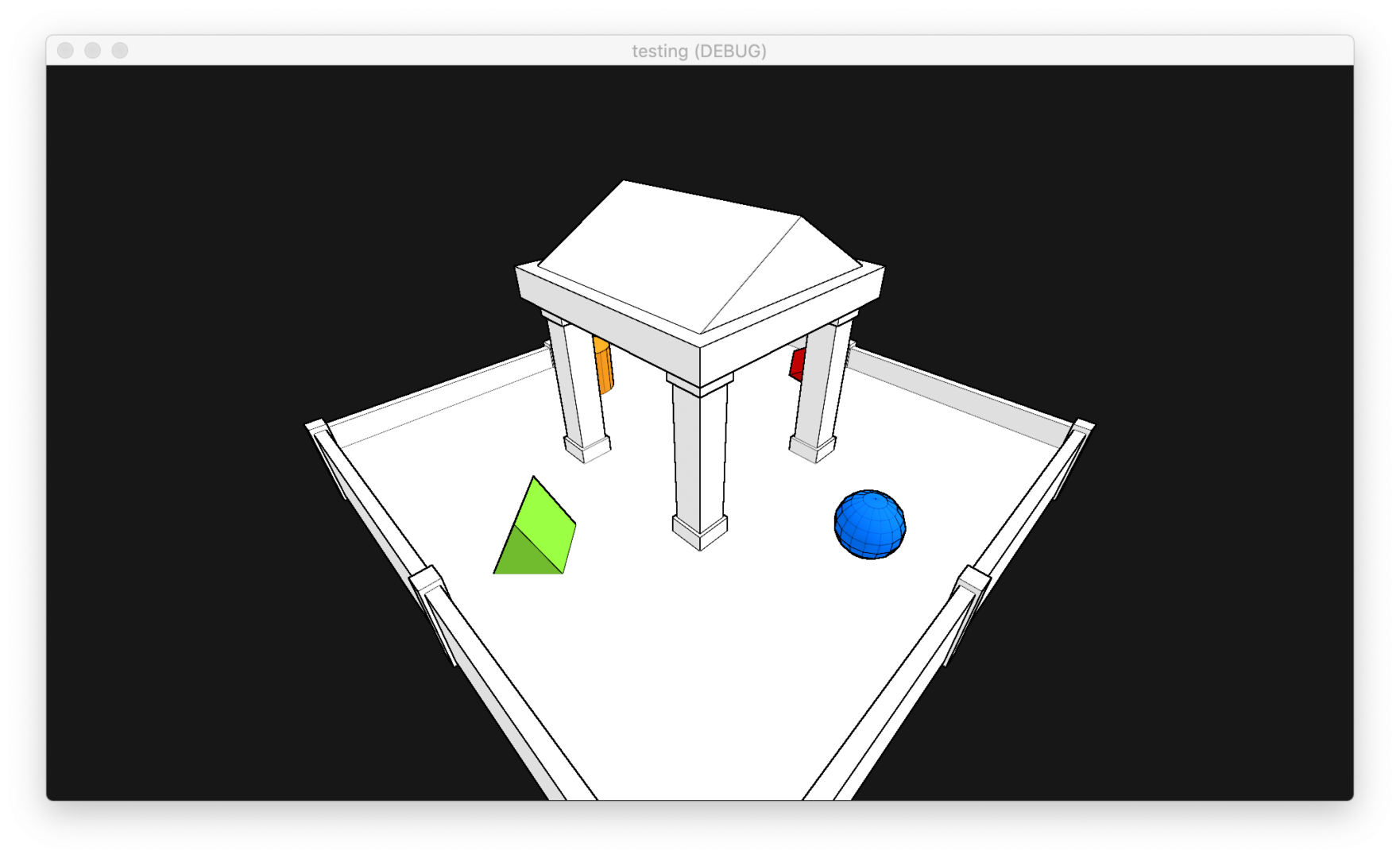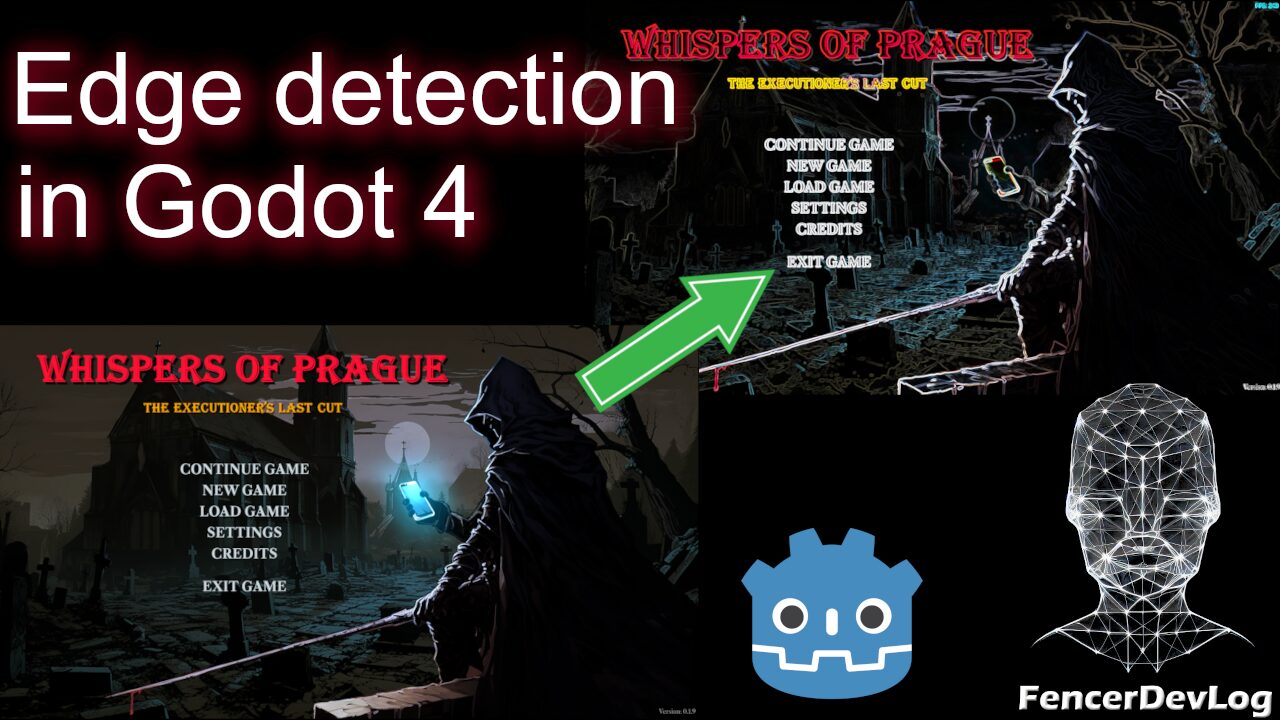3D Edge Detection Shader (Borderlands-Style)
Setup:
- Create a
MeshInstancenode - Give it a
QuadMeshmesh - Go the “Geometry” tab in the Inspector
- Raise the “Extra Cull Margin” to the max value:
16384
Unlike the last Edge-Detection shader I posted, this one also samples the depth texture to figure out where the edges are located.
A difference in color or depth will create an edge. This one is a little more expensive since it has a total of 10 texture samples when sampling for color and depth (still better than the traditional 18 texture samples that would otherwise be used in two sobel kernels, one for color and the other for depth). However, this shader also does involve a lot of matrix multiplications for calculating linear depth.
If I’m able to optimize this further, I will update this shader post.
What are the Parameters?:
- Edge Color: The color of the detected edges
- Threshold: The Color Difference threshold to detect edges
- Blend: Softens up the edges detected by color difference
- Enable Depth Pass: Enable the depth difference calculation
- Threshold Depth: The Depth Difference threshold to detect edges
- Blend Depth: Softens up the edges detected by depth difference
- Distance Fade Length: Maximum distance unto which the effect will be used (in World Units)
- Distance Fade Blend: How long the distance fade takes to fade out
Shader code
// NekotoArts YouTube: https://www.youtube.com/channel/UCD7K_FECPHTF0z5okAVlh0g
// Adapted from https://www.shadertoy.com/view/ldsfRn
shader_type spatial;
render_mode unshaded, depth_test_disable;
uniform vec4 edge_color : hint_color = vec4(0.0, 0.0, 0.0, 1.0);
uniform float threshold = 0.0;
uniform float blend = 0.01;
uniform bool enable_depth_pass = true;
uniform float threshold_depth = 0.0;
uniform float blend_depth = 0.01;
uniform float distance_fade_length = 50.0;
uniform float distance_fade_blend = 20.0;
void vertex(){
VERTEX *= 2.0;
POSITION = vec4(VERTEX, 1.0);
}
float getGrayScale(sampler2D sampler, vec2 coods){
vec4 color = texture(sampler,coods);
float gray = (color.r + color.g + color.b)/3.0;
return gray;
}
float get_linear_depth(sampler2D sampler, vec2 coords, mat4 ipm){
float depth = texture(sampler, coords).r;
vec3 ndc = vec3(coords, depth) * 2.0 - 1.0;
vec4 view = ipm * vec4(ndc, 1.0);
view.xyz /= view.w;
float linear_depth = -view.z;
return linear_depth;
}
void fragment(){
vec2 delta = vec2(0.0,0.003);
vec2 SCREEN_PIXEL_SIZE = 1.0 / VIEWPORT_SIZE;
vec2 iResolution = VIEWPORT_SIZE;
float m = max(iResolution.x,iResolution.y);
vec2 texCoords = SCREEN_UV;
vec3 screen_color = texture(SCREEN_TEXTURE, SCREEN_UV).rgb;
float c1y = getGrayScale(SCREEN_TEXTURE, texCoords.xy-delta/2.0);
float c2y = getGrayScale(SCREEN_TEXTURE, texCoords.xy+delta/2.0);
float c1x = getGrayScale(SCREEN_TEXTURE, texCoords.xy-delta.yx/2.0);
float c2x = getGrayScale(SCREEN_TEXTURE, texCoords.xy+delta.yx/2.0);
float dcdx = (c2x - c1x)/(delta.y*10.0);
float dcdy = (c2y - c1y)/(delta.y*10.0);
vec2 dcdi = vec2(dcdx,dcdy);
float edge = length(dcdi)/10.0;
edge = 1.0 - edge;
edge = smoothstep(threshold, threshold + blend, edge);
float final_edge = edge;
// Depth-Pass
if (enable_depth_pass){
c1y = get_linear_depth(DEPTH_TEXTURE, texCoords.xy-delta/2.0, INV_PROJECTION_MATRIX);
c2y = get_linear_depth(DEPTH_TEXTURE, texCoords.xy+delta/2.0, INV_PROJECTION_MATRIX);
c1x = get_linear_depth(DEPTH_TEXTURE, texCoords.xy-delta.yx/2.0, INV_PROJECTION_MATRIX);
c2x = get_linear_depth(DEPTH_TEXTURE, texCoords.xy+delta.yx/2.0, INV_PROJECTION_MATRIX);
dcdx = (c2x - c1x)/(delta.y*10.0);
dcdy = (c2y - c1y)/(delta.y*10.0);
dcdi = vec2(dcdx,dcdy);
float depth_edge = length(dcdi)/10.0;
depth_edge = 1.0 - depth_edge;
depth_edge = smoothstep(threshold_depth, threshold_depth + blend_depth, depth_edge);
final_edge *= depth_edge;
}
// Distance Fading
float linear_depth = get_linear_depth(DEPTH_TEXTURE, SCREEN_UV, INV_PROJECTION_MATRIX);
float df = 1.0 - smoothstep(distance_fade_length, distance_fade_length + distance_fade_blend, linear_depth);
final_edge = (1.0 - final_edge) * df;
final_edge = 1.0 - final_edge;
ALBEDO = mix(edge_color.rgb, screen_color.rgb, final_edge);
}












how to do for godot 4???
you can’t
why?
how can i use it on godot 4?